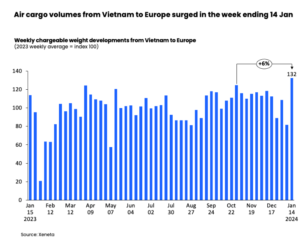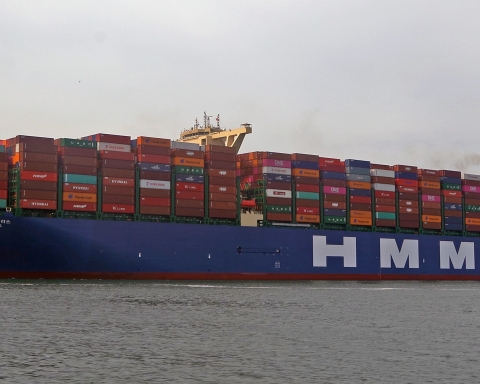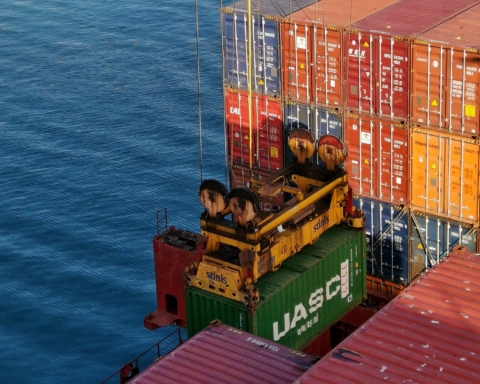Is sending goods by air safer than shipping them by sea? This is what every retailer is wondering at such a tense time for world trade.
It has now been over a month since the Houthis began attacking merchant ships that they believe are directly or indirectly linked to Israel. To date, over 30 vessels have been attacked or hit by missiles.
The international community’s efforts to try to counter the terrorist activity of the Yemeni rebels have been to no avail, at least for the time being. Not even the military blitzes against Houthi positions by the United States and Great Britain have helped definitively resolve the crisis.
The escalating scenario in the Middle East has convinced most shipping companies to stop passing through Suez. Circumnavigating Africa has now become a mandatory route for east-west links between the Far East and Europe.
Retailers always have just one goal: to protect their supply chains and ensure a constant flow of goods so that their shelves remain full. This is why, for many, sending goods by air is now more than a viable alternative to sending them by sea.
The founder of Alix International, Alice Arduini, recently spoke about this in an interview with Port News, suggesting that combined transport, sending freight by sea to Dubai and then by air from Dubai to Europe was now back in fashion.
The Oslo-based consultancy firm, Xeneta, confirms this new trend, reporting that on 14th January, air cargo sent from Vietnam to Europe (an important trade route for clothing) rose by 62% compared to the previous week. This is 6% higher than the record-breaking peak recorded in the first week of October 2022 and 16% higher than the volumes during the same week last year.
According to Xeneta’s Chief Air Freight Officer, Niall van de Wouw, the crisis in the Red Sea is clearly affecting air cargo. He said it was unusual to see such large increased demand in periods like these, which are usually quiet for air freight.
Mr. van de Wouw points out that routes from Vietnam to Europe are very busy with clothing shipments. The reason for this is that the clothing industry is choosing to send a large amount of its merchandise by air instead of continuing to send it by sea due to the Red Sea crisis, adding, however, that the forthcoming Chinese New Year could indirectly contribute to the increase in volumes.
Air freight rates from Vietnam to Europe have risen by 10% compared to last week, Further increases can be expected due to greater air cargo volumes, which will certainly put pressure on capacity and load factor.
One thing is certain, though. However much air freight rates may rise in the short to medium term, it is unlikely that they will ever reach ocean freight rate levels. The latest figures from the Xeneta Shipping Index show, not surprisingly, that on 17th January spot freight rates between Asia and Northern Europe were up by over 25% on a weekly basis reaching an average of $4739 per 40’ box .The figures are over 200% higher than the previous month, when freight rates averaged $1660 per FEU. The Loadstar warns, however, that some carriers are selling their available slots at over $10,000 per FEU.
When the Red Sea crisis got worse in December, Mr van de Wouw said, Xeneta was among the first to point out that the geopolitical tension in the Red Sea could have an impact on air cargo. He forecasts that over the next two weeks we should know for sure whether cargo volumes being transferred from land to air is really a consequence of the Red sea crisis.

Translation by Giles Foster




